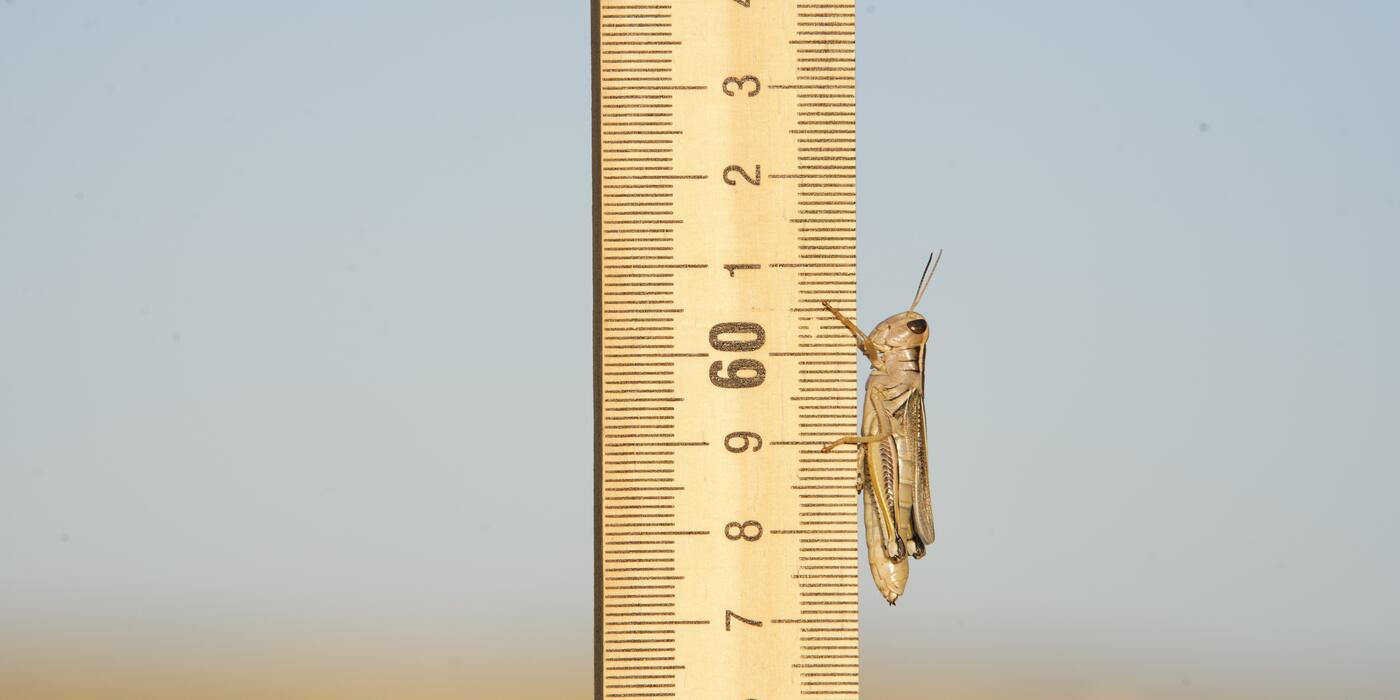Maned Wolf Program at the Smithsonian Conservation Biology Institute Celebrates Birth of Three Pups
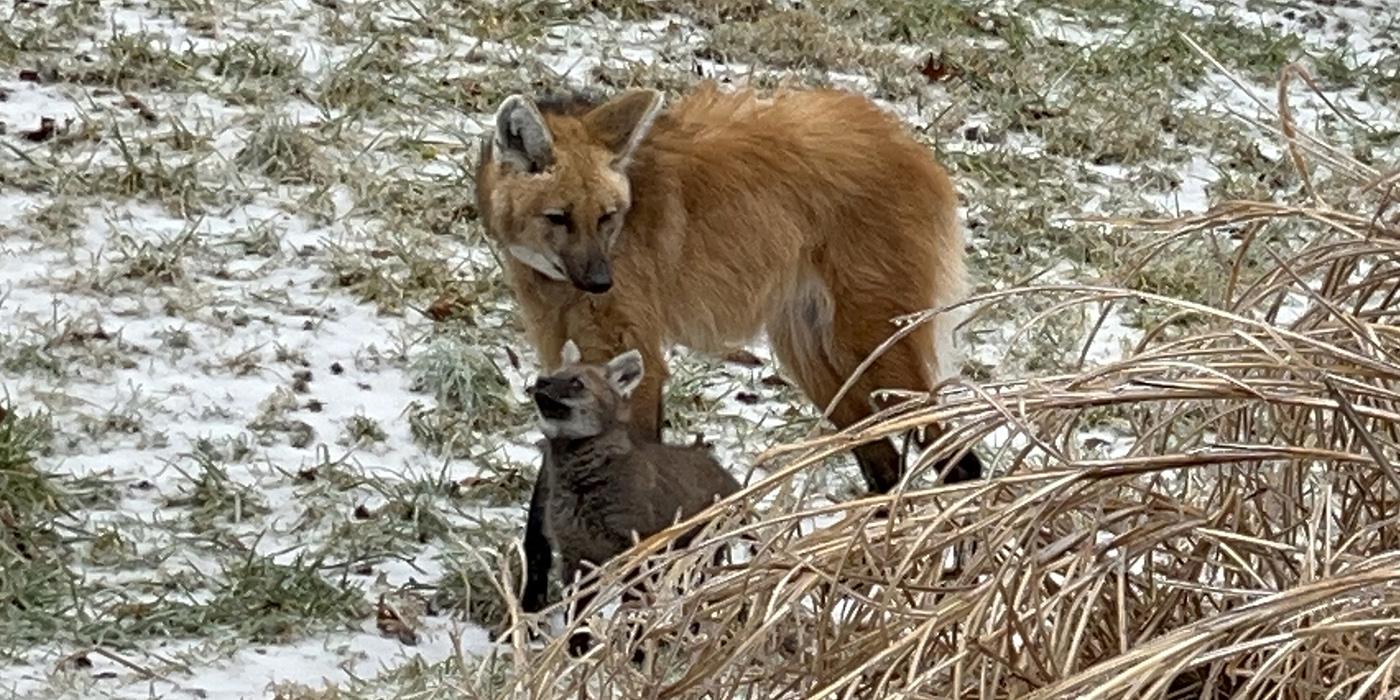
In an exciting conservation milestone, three maned wolf pups were born this winter at the Smithsonian’s National Zoo and Conservation Biology Institute.
The births are important for the survival of this uncommon species, said Adrienne Crosier, carnivore curator at the Smithsonian’s private conservation and research campus in Front Royal, Virginia.
The first pup, a female, was born to parents Elliana, age 7, and Nikko, age 11, neither of whom had raised pups successfully before. Elliana gave birth two pups the night of Dec. 16-17, 2024, but only one survived. The second litter of pups, both females, was born Dec. 28, 2024, to Terra, age 7, and Bravo, age 11. Terra gave birth to three pups, with two surviving.
The pups, which do not yet have names, are on track with the developmental milestones typical for their species, said Crosier. At around eight weeks old, the pups are becoming more inquisitive and venturing out of their dens to explore their habitat areas. And in February, animal care teams conducted the first check-ups on each of the three pups, complete with vaccines, deworming medicine and blood draws. All of the babies received a clean bill of health.
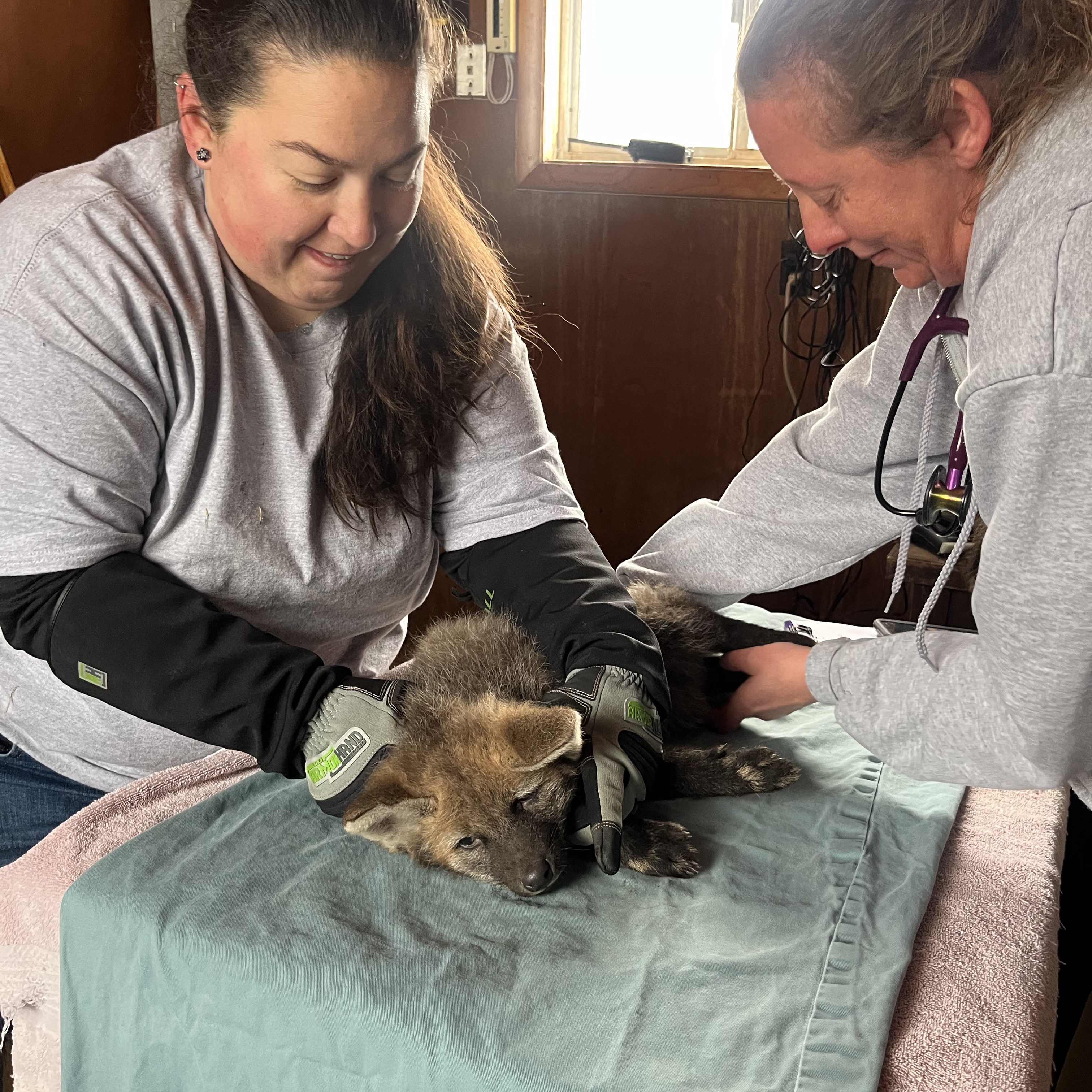
One of Terra’s two pups receives a thorough veterinary check-up by the animal care team on Feb. 13, 2025. Smithsonian/Jessica Kordell
Celebrating the births of an uncommon animal
Maned wolves are notoriously difficult to breed in human care, which makes the births an even greater boon to the overall North American zoo population, said Nucharin Songsasen, head of the Smithsonian’s Center for Species Survival.
The Smithsonian participates in the American Zoological Association’s (AZA) Maned Wolf Species Survival Plan (SSP), a cooperative managed breeding program that works to protect the genetic diversity of maned wolves in human care and acts as a safeguard against extinction.
The pups are a significant contribution to the population of maned wolves in North American zoos. Over the last year, just four surviving maned wolf pups were born in the entire AZA population, including the three pups born in December, said Songsasen.
“In addition to being genetically valuable, both males are over 10 years old, which means the fact that they produced pups is an even bigger deal than normal,” said Songsasen.
A health scare for Bravo
The birth of Terra and Bravo’s litter is even more special than most, said Crosier. Bravo’s genes are not well represented among maned wolves at North American zoos, which means cubs he produces would increase the population’s overall genetic diversity.
But in the fall of 2024, Bravo suffered a life-threatening stomach torsion. Veterinary staff quickly stepped in to perform an emergency surgery to fix the issue, which allowed Bravo to recover.
Several weeks later, keepers worked to reunite Bravo and Terra during the species’ annual breeding window, and the pair mated successfully in mid-October.
Leaving care to the parents
Weighing just 13 ounces at birth, maned wolf pups are totally reliant on the care of their attentive parents. Animal care teams keep their distance from the dens so family units can bond with minimal interference. Staff keep an eye on the pups’ health inside the den through a network of closed-circuit cameras.
“Terra has been rock solid as a mom. Like a good maned wolf mother, she’s been keeping the pups in the den and eating really well,” said Crosier. “Meanwhile, Ellie is very smart and highly trainable. Keepers worked with her extensively before the births to obtain awake voluntary x-rays, which helped veterinary staff determine how many pups she was carrying.”
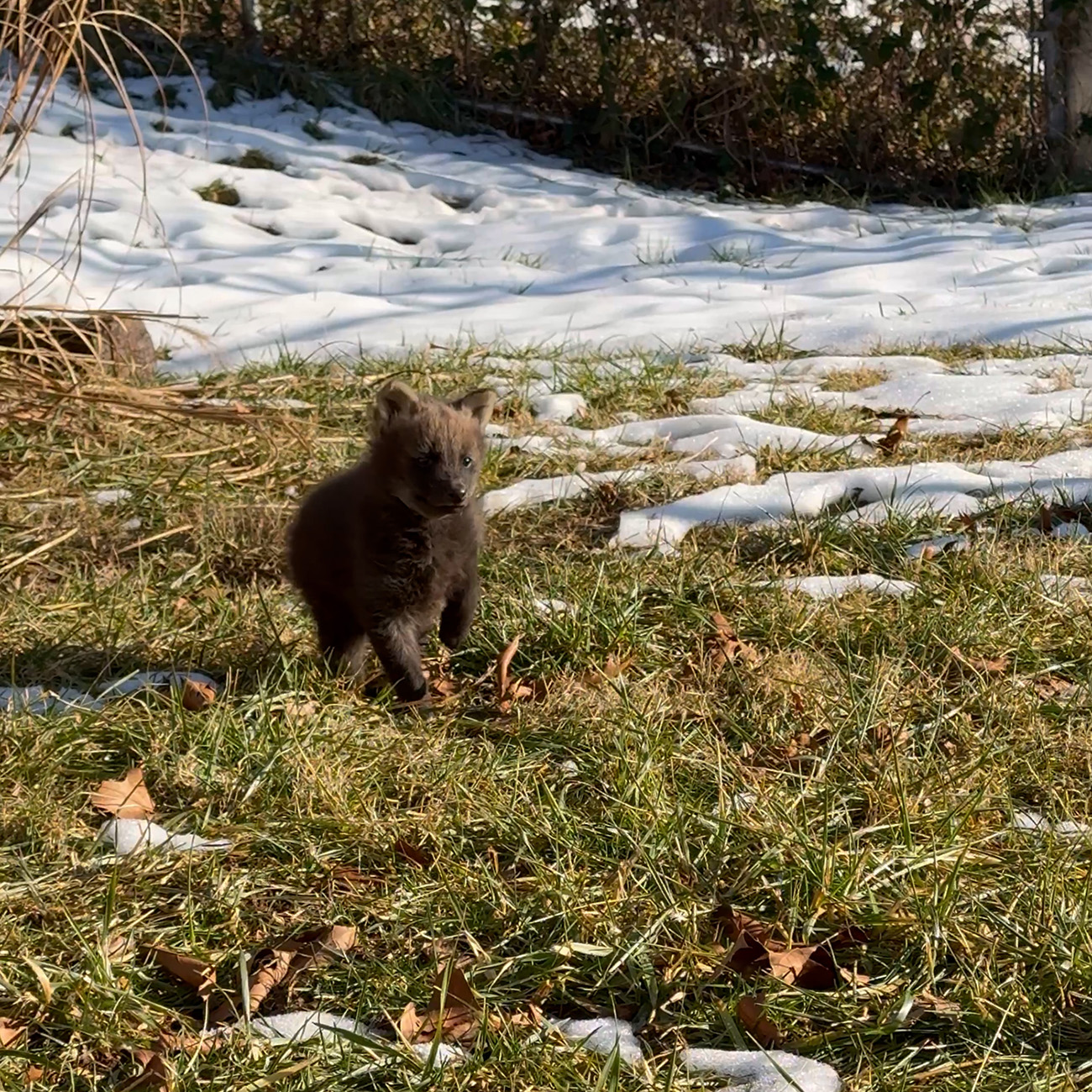
One of the pups explores its outdoor habitat on Jan. 23, 2025. Including the pups, eleven maned wolves live at the Zoo’s conservation campus. Smithsonian/Marissa Gonzalez
Keepers noted Elliana’s one-month-old pup is precocious, venturing outside her den at an earlier age than usual.
“Ellie’s pup is like her little mini-me. She loves following mom wherever she goes and is spending time exploring her yard, enjoying the occasional snow, and getting treats from the keepers,” reported carnivore keepers Marissa Gonzalez and Jessica Kordell. “It’s unusual for maned wolf pups to be out and visible to keepers during the day at this age, so it’s been a unique and joyful opportunity to observe these behaviors we wouldn’t otherwise get to see.”
Staff have not determined what the future holds for each pup. Maned wolves typically reach sexual maturity at around one year old, at which point the family unit tends to break up. The pups will likely either stay at the Zoo's conservation and research campus or be moved to other zoos to aid future maned wolf breeding efforts.
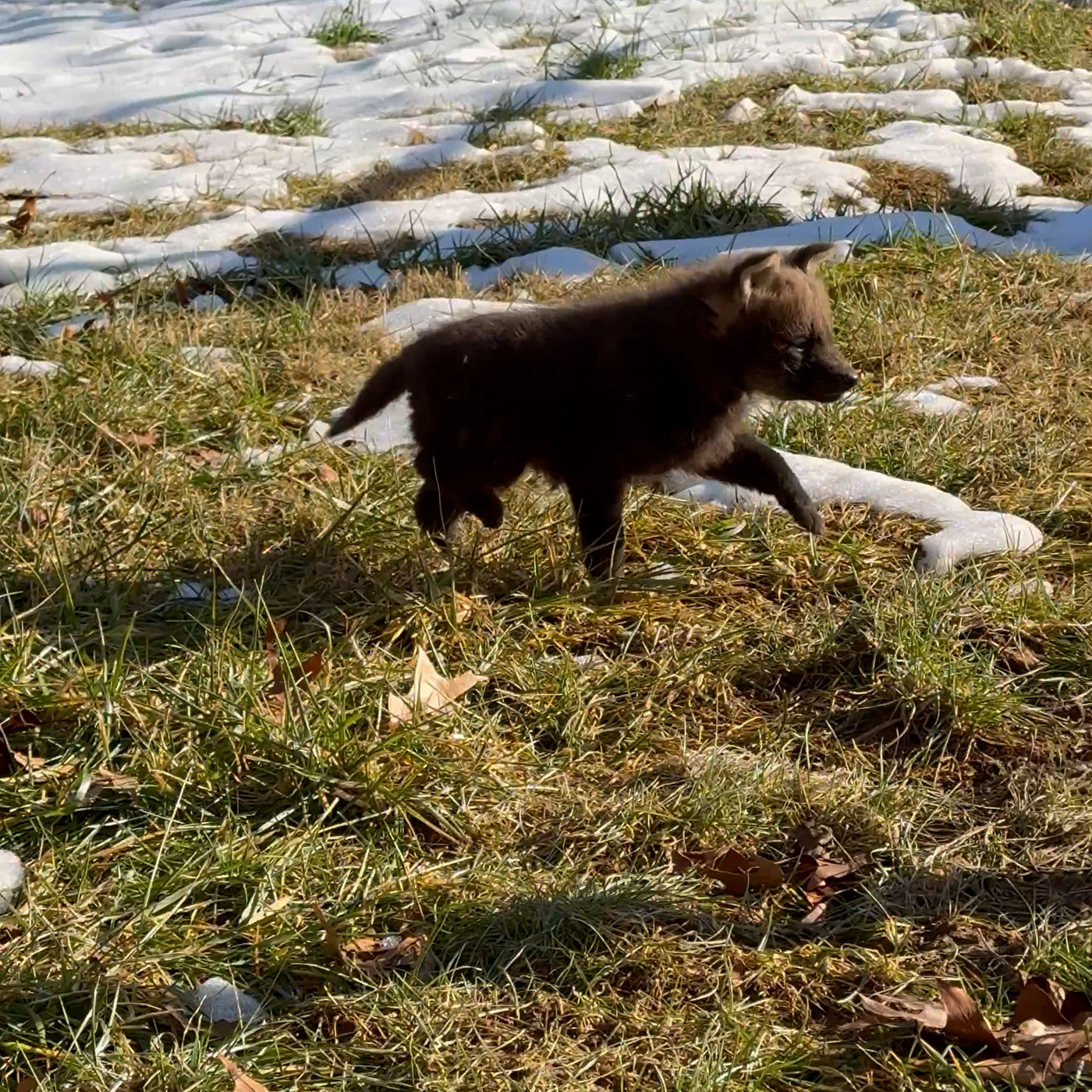
One of the pups checks out a snow pile on Jan. 23, 2025. The pups are inquisitive and eager to investigate their surroundings. Smithsonian/Marissa Gonzalez
How the Smithsonian protects maned wolves
Maned wolves are a rare species found only in the grasslands and scrublands of South America. Nicknamed ‘foxes on stilts,’ these canines hunt small mammals, birds, and reptiles, but also eat fruits like the lobeira, or ‘wolf apple’. Despite their name, they are only distantly related to wolves.
With about 17,000 left in the wild, the International Union for Conservation of Nature considers maned wolves a 'Near Threatened' species. The expansion of industrial agriculture has led to rapid habitat destruction and human persecution, leaving these unique animals fighting for survival.
Researchers at the Smithsonian have contributed to maned wolf conservation efforts for more than five decades. Recent studies have examined the wolves’ reproduction, stress monitoring and disease management, with the goal of providing local land managers with the right tools to help these amazing animals thrive in their native habitat.
The Smithsonian’s National Zoo and Conservation Biology Institute advances conservation science to help create a sustainable future for people, wildlife and the planet. At the heart of its mission is a commitment to educating the public, partnering with local communities, and preparing future generations to safeguard animals like the maned wolf for generations to come.
Subscribe to the National Zoo News for monthly updates about animal care and conservation science, delivered straight to your inbox.
Related Species:
